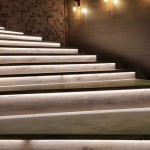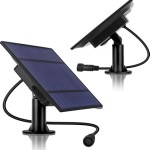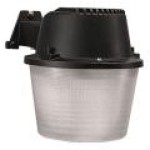Modern Tudor Outdoor Lighting
Modern Tudor homes, characterized by their steeply pitched roofs, decorative half-timbering, and prominent chimneys, present unique opportunities for impactful outdoor lighting. Effective illumination not only enhances the architectural details and curb appeal but also provides safety and security. Choosing the right fixtures and implementing a well-designed lighting plan are crucial to achieving a cohesive and aesthetically pleasing result that complements the Tudor style.
Emphasizing Architectural Features
Tudor architecture often boasts intricate details, from ornate gables and multi-paned windows to textured brickwork and stone accents. Outdoor lighting should highlight these features, creating depth and visual interest. Uplighting, strategically placed at the base of trees or along the foundation, can wash the facade with a warm glow, accentuating the textures and vertical lines of the home. For gables and other decorative elements, carefully positioned spotlights can draw attention to their craftsmanship. Avoid overlighting, which can create a harsh, unbalanced look. Instead, focus on creating a subtle interplay of light and shadow to enhance the architectural drama.
Selecting Appropriate Fixtures
The choice of lighting fixtures plays a significant role in achieving the desired aesthetic. While traditional lantern-style fixtures are a classic choice for Tudor homes, modern interpretations of these designs offer updated functionality and energy efficiency. Look for fixtures with dark metal finishes, such as oil-rubbed bronze or wrought iron, which complement the traditional Tudor palette. Copper and brass fixtures can also be appropriate, particularly when paired with warmer-toned brick or stone. Avoid overly ornate or contemporary fixtures, as these can clash with the Tudor style. Opt for fixtures that are proportional to the size of the home and the surrounding landscape.
Creating a Welcoming Entrance
The entrance of a Tudor home is a focal point and deserves special attention. Well-placed lighting can create a welcoming ambiance and improve visibility for guests. Wall-mounted lanterns flanking the front door are a classic choice, providing both illumination and a sense of symmetry. Pendant lights hung from a porch ceiling offer a more dramatic statement, while recessed lighting can provide subtle, even illumination. Consider incorporating path lighting to guide visitors safely to the entrance. Low-voltage landscape lighting can be used to illuminate walkways and steps, ensuring both safety and aesthetic appeal.
Enhancing Landscape Features
Outdoor lighting should not be limited to the house itself. The surrounding landscape plays a vital role in the overall aesthetic and can be enhanced with thoughtfully placed lighting. Uplighting trees and shrubs can create dramatic silhouettes and add depth to the landscape. Downlighting can be used to highlight specific features, such as flower beds or statues. Path lighting, in addition to its functional purpose, can also create visual interest and guide the eye through the landscape. Avoid overlighting the landscape, which can detract from the architecture of the home and create a cluttered look.
Considering Security and Safety
While aesthetics are important, outdoor lighting also serves the practical purposes of security and safety. Well-lit walkways and entrances deter potential intruders and prevent accidents. Motion sensor lights can be strategically placed around the perimeter of the property to provide added security. Consider incorporating timer-controlled lighting to automate the illumination of key areas. Ensure that all outdoor lighting fixtures are weatherproof and durable to withstand the elements.
Integrating Smart Technology
Modern technology offers increased control and efficiency for outdoor lighting. Smart lighting systems allow homeowners to remotely control the intensity, color, and scheduling of their outdoor lights. This can be particularly useful for security, allowing homeowners to simulate occupancy while away. Smart lighting can also be integrated with other smart home systems, further enhancing convenience and automation. Consider the long-term benefits of smart technology when planning your outdoor lighting scheme.
Layering Lighting for Depth and Dimension
Effective outdoor lighting utilizes a layered approach to create depth and dimension. Combining different types of lighting, such as ambient, accent, and task lighting, can achieve a balanced and visually appealing result. Ambient lighting provides overall illumination, while accent lighting highlights specific features. Task lighting serves a functional purpose, such as illuminating walkways or entrances. By carefully layering these different types of lighting, you can create a dynamic and engaging outdoor space.

Uql1584 Tudor Outdoor Post Light 19 H X 9 75 W Natural Black Finish Urban Ambiance

Cottage Style Lanterns Bevolo

Olde English Tudor Lighting Quality Handcrafted Light Fixtures

Modern Tudor Style Home Bunch Interior Design Ideas

Modern Tudor Hendel Homes

How To Update A Tudor Style Home Exterior Brick Batten

Modern Tudor Style Home Bunch Interior Design Ideas

Improve Your Home With Affordable Designer Lighting Bunch Interior Design Ideas

Modern Tudor Pt I Bria Hammel Interiors

What Is A Tudor Style House Design Inspiration







